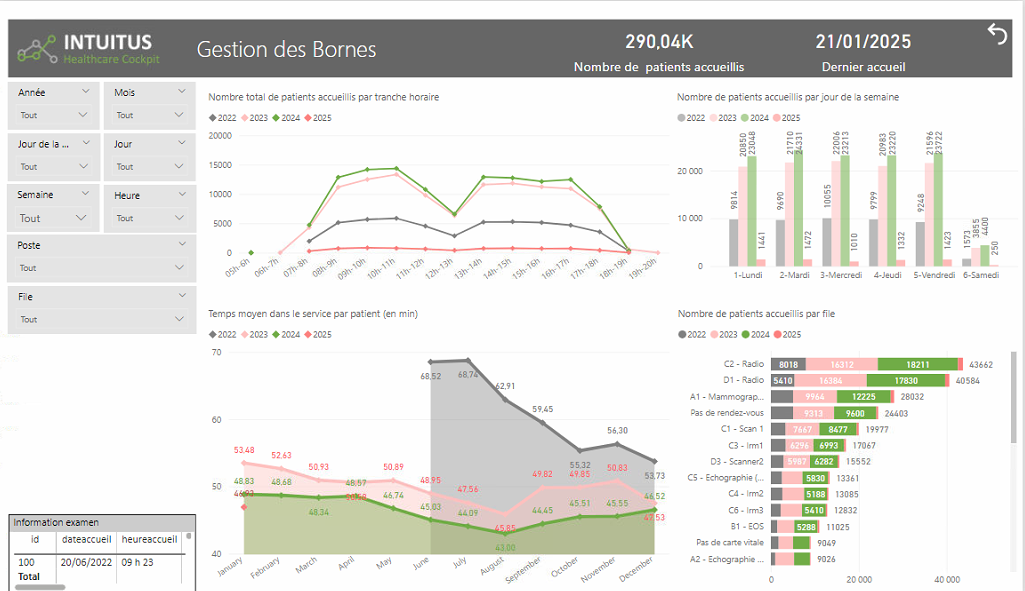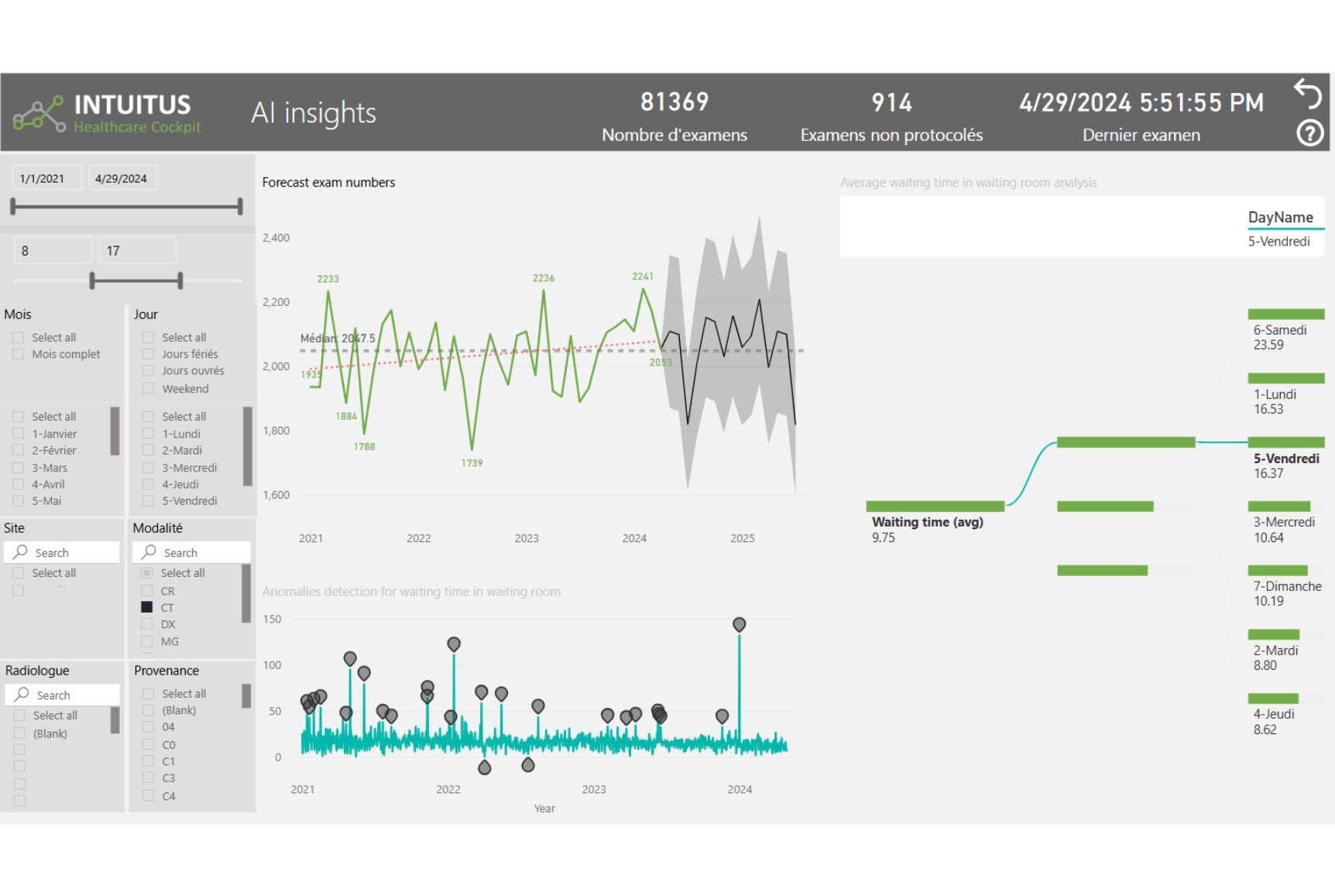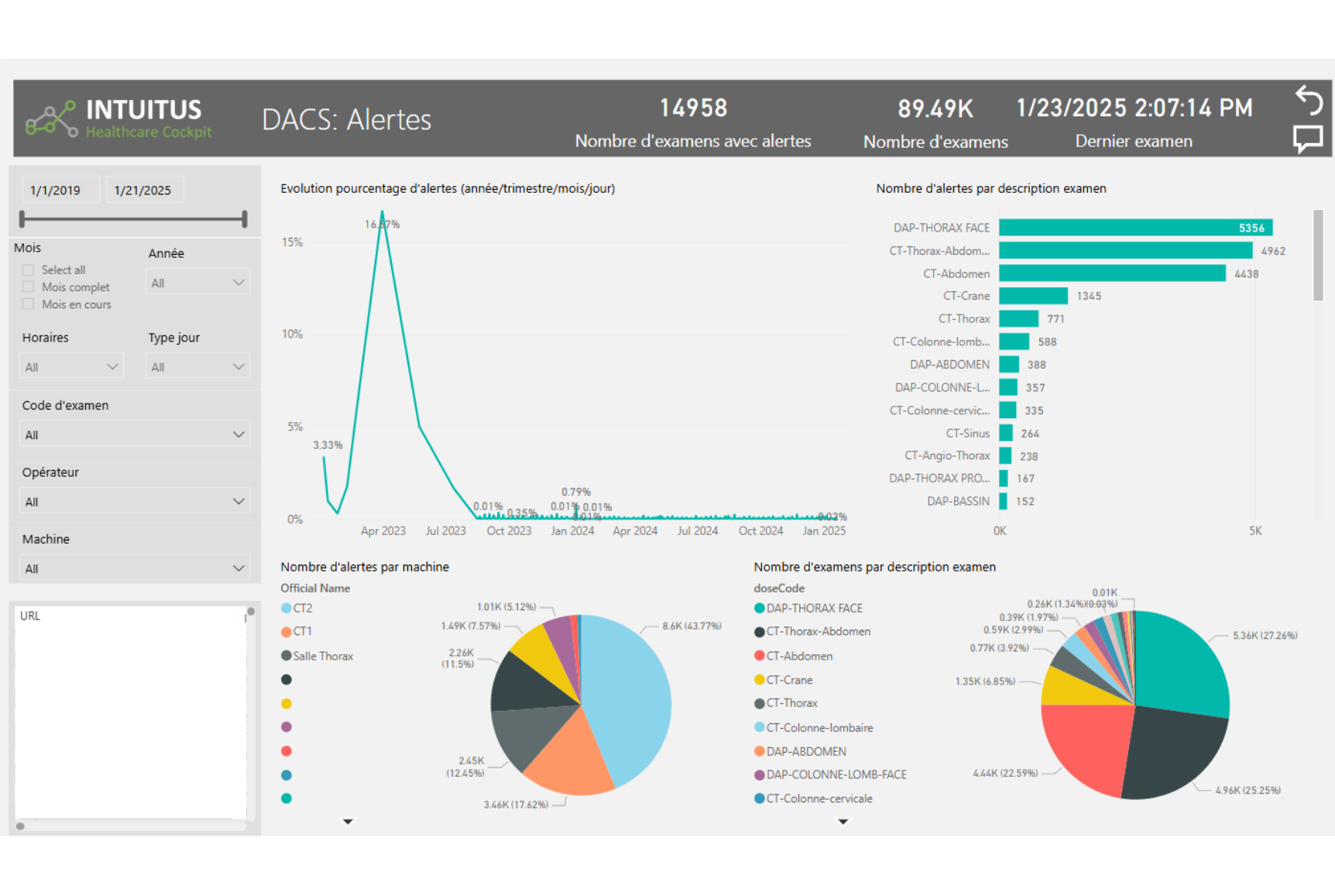Recent innovations in our Business Intelligence tool, INTUITUS
Recent innovations in our Business Intelligence tool, INTUITUS
Over the past few months, our Business Intelligence solution, INTUITUS, has undergone significant advancements that all users will soon benefit from.
New Integrations with Third-Party Systems
The Use of Artificial Intelligence to Predict Future Activity
Major Enhancements to the Dose Management Module (DACS)
New Integrations with Third-Party Systems

In 2024, we introduced new integrations to meet the growing needs of our users. The MOLIS laboratory management system, the OPALE pricing system, and the reception kiosk management software by the French company THERASOFT are now seamlessly integrated with INTUITUS. These strategic interconnections enable optimal use of existing databases, providing key performance indicators to help users make informed decisions and enhance operational efficiency.
Drawing from these experiences, we can now standardise the connection of these systems, enabling faster responses for future implementations.
With extended compatibility to systems such as DxLab, CoreLab, MOLIS, and GLIMS, INTUITUS has become the most connected Business Intelligence solution on the market.
Harnessing Artificial Intelligence to Predict Business Activity

Artificial intelligence is now an integral part of the INTUITUS Business Intelligence solution. Its capabilities allow the detection of anomalies, the anticipation of future trends, and the analysis of massive data volumes with unparalleled precision.
In practice, INTUITUS can now predict laboratory or radiology department activity months in advance. It also sheds light on observed phenomena, such as extended waiting times in reception areas, by identifying contributing factors such as equipment type, human resource availability, or fluctuations by time of day and week.
Across all implemented dashboards—radiology, dose management, laboratory, and operating room—we can now deploy these intelligent algorithms to support decision-makers in implementing the most optimised strategies.
These intelligent algorithms are deployed across the full range of dashboards covering radiology, dose management, laboratory, and operating room. The objective is clear: to provide decision-makers with accurate and actionable information to enhance operational performance and anticipate future needs.
Major Enhancements to the Dose Management Module (DACS)

Finally, the dose management module (DACS) has undergone significant improvements.
Users now have access to a tool that centralises and structures all information from radiation-emitting imaging devices. This approach allows a better understanding and utilisation of the data, providing a clear and detailed view to optimise dose management and enhance patient safety.
A simplified version, accessible to field operators who are not radiophysicists, is also available.
By 2025, the DACS module will also incorporate a territorial approach to dose management and offer precision tools designed specifically for radiophysicists.
